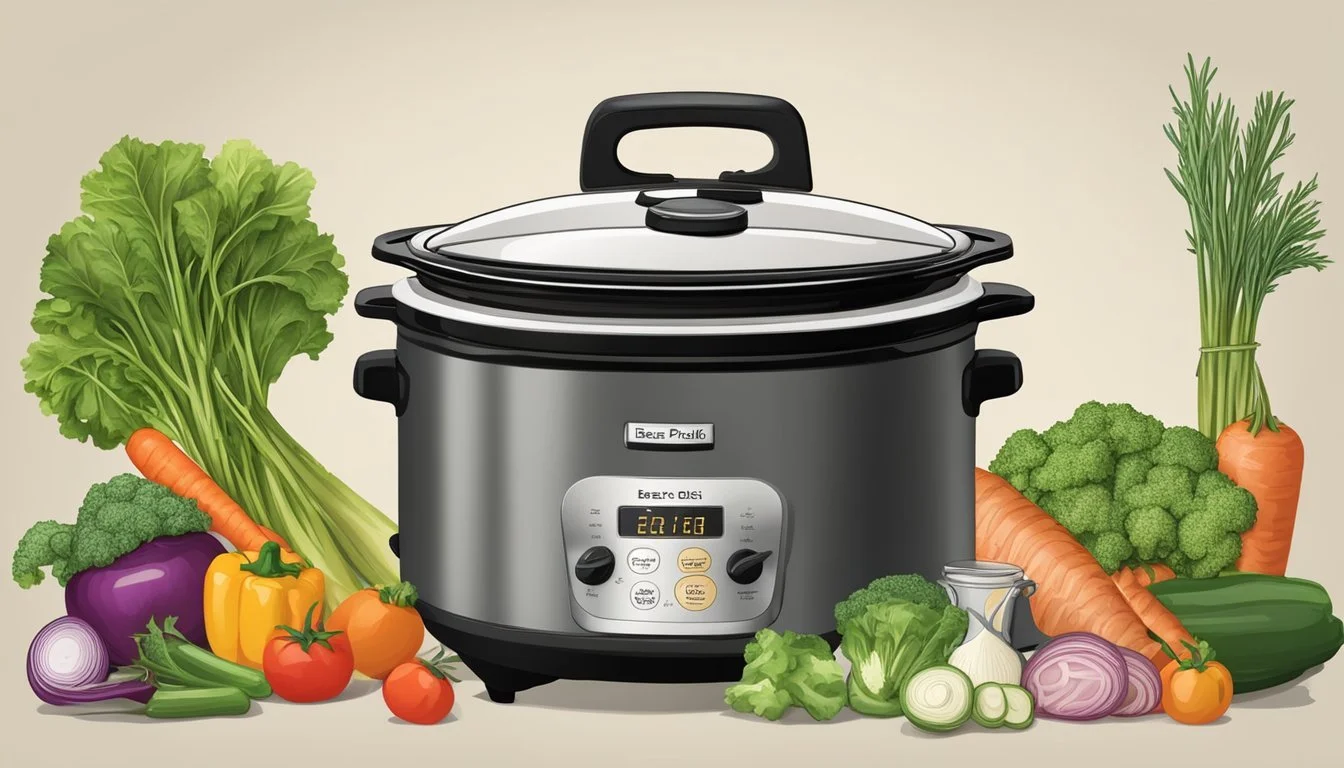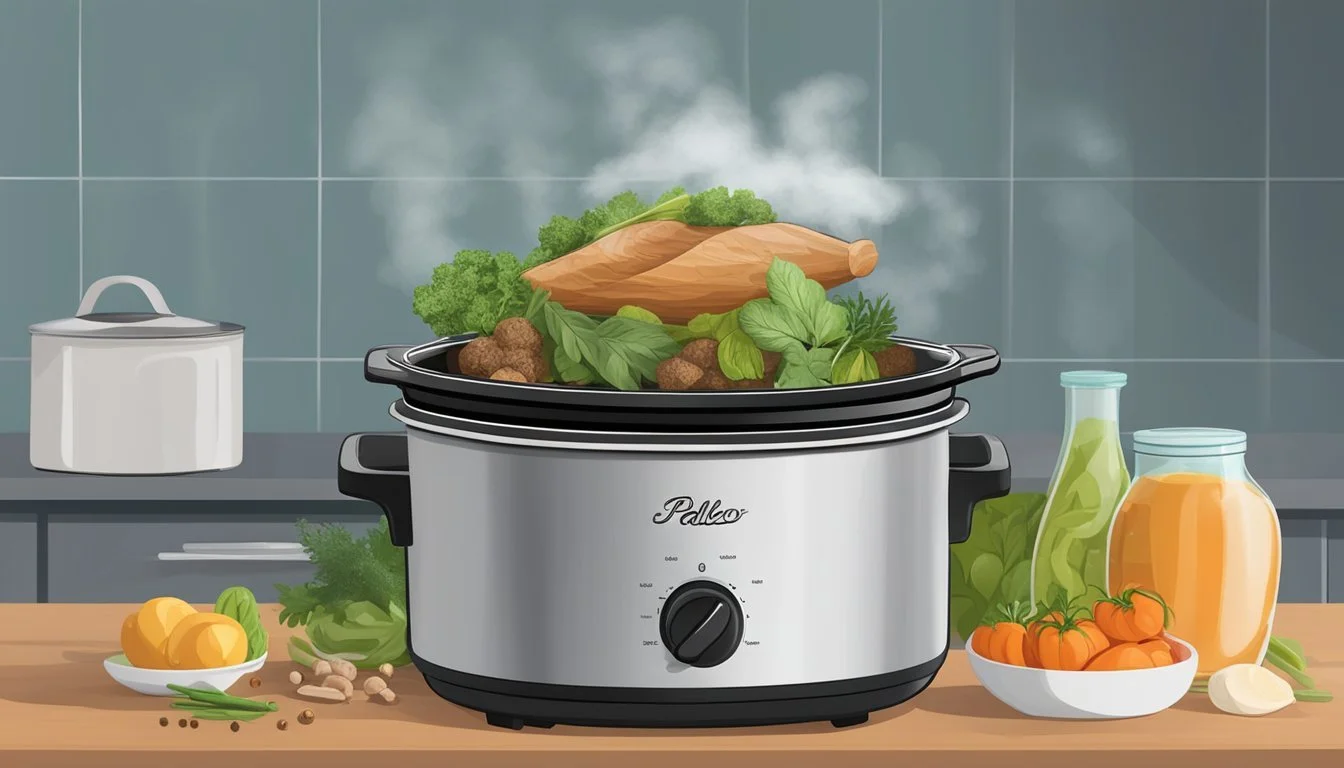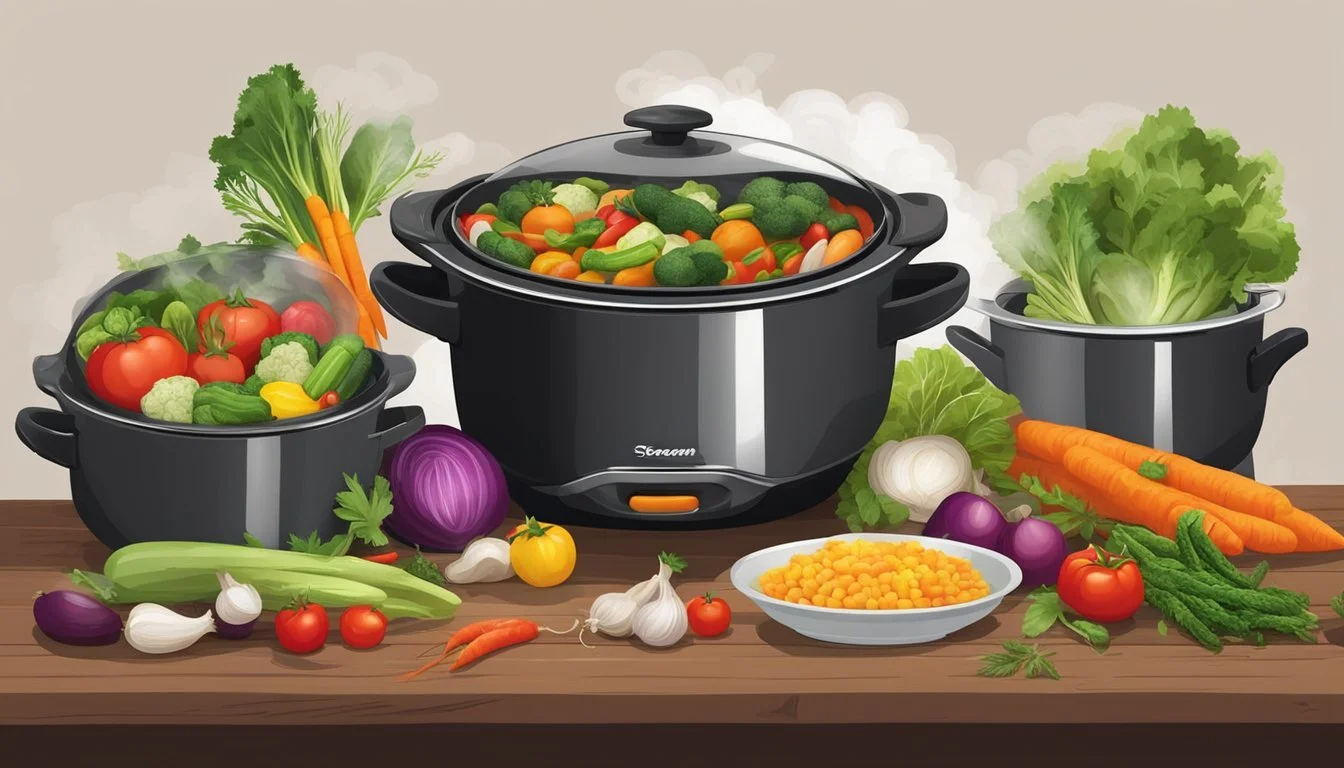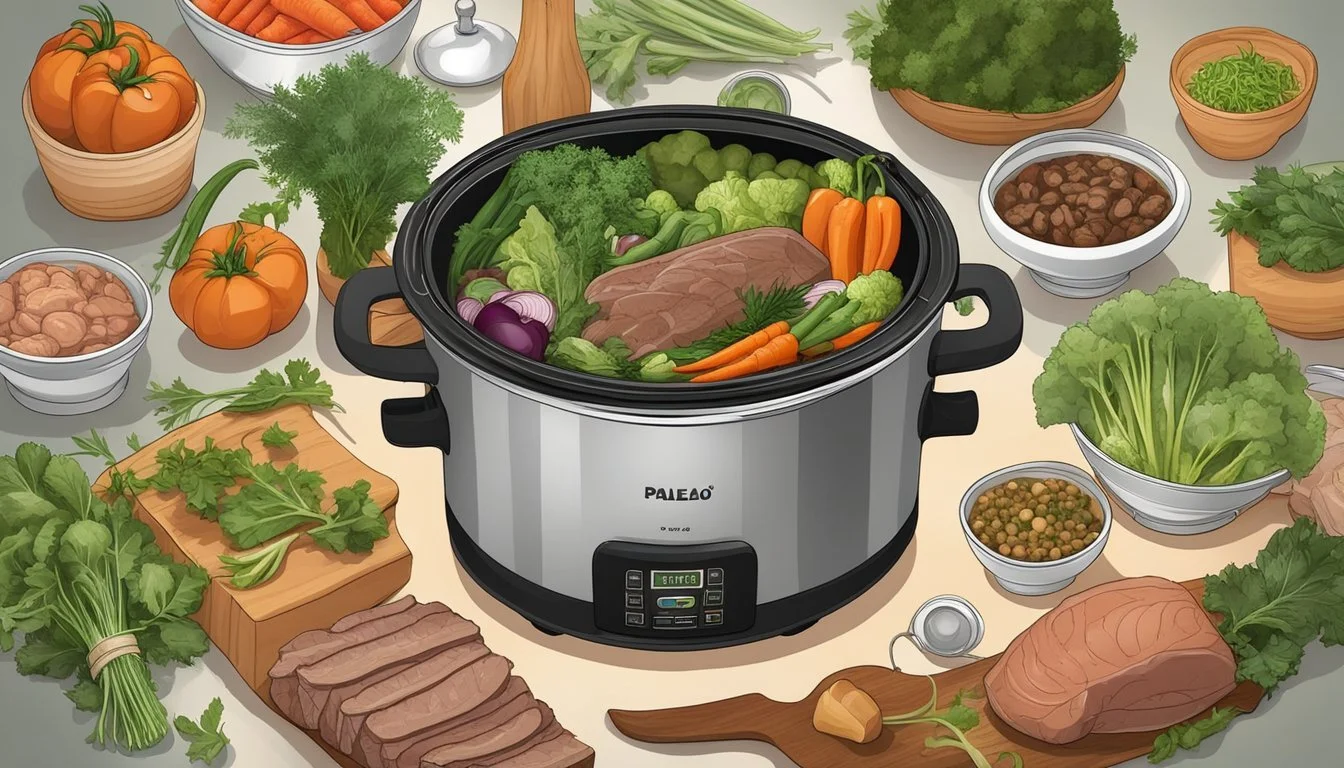The Best Paleo Diet Recipes for Slow Cooker Success
Simple and Flavorful Meals
The Paleo diet, often referred to as the "caveman diet," emphasizes eating whole foods such as lean meats, fish, fruits, vegetables, nuts, and seeds, akin to the eating patterns of ancient humans. Adherents avoid processed foods, grains, legumes, and dairy products. To make adhering to this diet more convenient, many have turned to slow cookers as a way to prepare hearty and healthy meals with minimal fuss.
Slow cookers are ideal for the Paleo lifestyle because they allow for the preparation of large batches of flavorful dishes without the need for constant supervision. They work well to tenderize tougher cuts of meat—a staple protein source in the Paleo diet—while also preserving the nutrients and flavors of ingredients. Paleo-friendly slow cooker recipes typically layer vegetables and meats with spices and broths, resulting in rich, satisfying meals that comply with diet rules.
Whether it's a comforting soup, a robust stew, or a tender pot roast, there's a plethora of recipes to choose from. With the slow cooker's set-it-and-forget-it approach, individuals can come home to a hot, ready-to-eat meal, making it easier to stay on track with their Paleo eating plan. Select recipes cater to all preferences, from the sweetness of honey garlic chicken thighs (What wine goes well with chicken thighs?) to the bold flavors of a Thai beef stew, (What wine goes well with beef stew?) ensuring that following the Paleo diet can be both enjoyable and stress-free.
Getting Started with Paleo
The Paleo diet revolves around the concept of eating like our Paleolithic ancestors, which means focusing on whole, unprocessed foods. Individuals embark on this dietary journey for a variety of health reasons, often seeking a grain-free and gluten-free lifestyle. The foundation of the Paleo diet is nutrient-dense food choices that exclude grains, legumes, processed sugars, and most dairy products.
Essential Components:
Proteins: Grass-fed meats, free-range poultry, wild-caught fish.
Vegetables: A vast variety, emphasizing leafy greens and root vegetables.
Fruits: In moderation, due to their natural sugar content.
Fats: Quality sources like avocados, nuts, and seeds.
Herbs and Spices: To add flavor without processed additives.
To successfully adhere to a Paleo meal plan, it's encouraged to prepare meals in advance. The slow cooker is an excellent tool for this purpose. It allows individuals to create flavorful, wholesome meals with minimal effort. A slow cooker can tenderize less expensive cuts of meat, which is perfect for Paleo's emphasis on animal proteins.
When planning meals, one might consider integrating Whole30 principles as a stricter, 30-day resetting phase. Whole30 shares Paleo's gluten-free and grain-free ethos but takes it further by also eliminating natural sweeteners.
Sample Paleo Slow Cooker Meal Plan:
Monday: Garlic lover's beef stew with olives and tomatoes.
Tuesday: Slow cooker chicken thighs with cauliflower rice.
Wednesday: Crock Pot chicken soup.
Thursday: Crockpot Tom Kha Yum Soup.
Friday: Slow cooker kale and ham hocks.
Note: It's crucial to ensure that any added sauces or seasonings comply with the strict no-grain, no-gluten parameters of the Paleo diet.
The Essentials of Slow Cooking
The art of slow cooking in a crockpot is a combination of understanding your equipment, mastering techniques, and appreciating the inherent advantages of this cooking method. Slow cookers provide a hands-off approach to meal preparation with results that can be both nutritious and flavorful.
Choosing the Right Slow Cooker
When selecting a slow cooker, one should consider size, shape, and additional features. A small 1 to 3-quart crockpot suffices for individual meals, while a 6 to 7-quart model is ideal for families or batch cooking. Oval-shaped slow cookers are preferable for larger cuts of meat, while round ones are suitable for stews (What wine goes well with stews?) and soups. Advanced features may include programmable settings, multiple heat options, and even searing capabilities.
Understanding Slow Cooking Techniques
Slow cooking relies on steady, low-temperature cooking over several hours. Two standard settings are common: Low typically cooks at around 190°F, ideal for 6-8 hours, while High reaches about 300°F, reducing cook time to 3-4 hours. To achieve the best results, one should avoid lifting the lid frequently, as this releases heat. Utilizing tongs can aid in safely adding or removing ingredients, minimizing heat loss and potential burns.
Advantages of Slow Cooking
The benefits of using a crockpot for the Paleo diet are numerous. Crockpots excel at tenderizing less expensive cuts of meat, making them juicy and flavorful. They also allow for better retention of nutrients due to lower cooking temperatures. Additionally, slow cookers offer convenience; one can prepare ingredients, set the cooker, and return to a completely cooked meal later in the day.
Paleo-Friendly Ingredients
The paleo diet emphasizes whole foods similar to those our hunter-gatherer ancestors would have eaten. The following sections delineate specific ingredients integral to crafting flavorful and nutritious paleo slow cooker meals.
Meat Selection Guide
For the paleo diet, high-quality, grass-fed meats are preferred due to their nutrient profile and alignment with ancestral dietary patterns. Chicken, beef, and pork are excellent protein sources that can be slow-cooked to tender perfection.
Chicken: Opt for organic, free-range varieties.
Beef: Grass-fed selections like brisket and stew meat are ideal.
Pork: Choose cuts such as tenderloin and shoulder for long, slow cooking.
Vegetables and Fruits
Vegetables and fruits provide essential vitamins and fibers. They should be organic and as fresh as possible. Incorporating a diverse array of colorful vegetables can enhance both taste and nutritional value.
Leafy greens (spinach, kale)
Root vegetables (carrots, sweet potatoes)
Nightshade vegetables (tomatoes, bell peppers)
Fruits (apples, berries, for sweetness and acidity)
Healthy Fats and Oils
Healthy fats are crucial to the paleo diet. They add flavor and aid in the absorption of fat-soluble vitamins.
Olive oil: Use extra-virgin olive oil for its monounsaturated fats.
Coconut oil: A saturated fat that's stable under high heat and imparts a subtle coconut flavor.
Spices and Herbs
The right combination of spices and herbs can transform a dish without the need for processed additives. They should be fresh or properly dried and stored for the best flavor.
Spices: Include cumin, paprika, and turmeric for robust profiles.
Herbs: Fresh parsley, thyme, and rosemary enrich dishes with their aromatic qualities.
Exquisite Paleo Slow Cooker Recipes
Embrace the art of simplicity and health with these paleo slow cooker recipes that promise to deliver robust flavors and tender textures. Let the slow cooker do the hard work, yielding nutritious meals that adhere to the paleo philosophy.
Satisfying Soups and Stews
In the realm of comfort food, Paleo Beef Stew stands out with its rich blend of root vegetables and succulent beef, slowly simmered to perfection. Traditional Chicken Soup also makes an appearance in its paleo version, featuring a clear broth brimming with tender chicken and hearty vegetables, all without any grains or dairy.
Tender Roasts and Briskets
For those who appreciate a majestic centerpiece, the slow cooker offers tantalizing roasts and briskets that fall apart at the touch of a fork. Paleo chuck roasts gain depth of flavor and an irresistible pull-apart texture, satisfying even the most robust appetites.
Delicious Poultry Dishes
Poultry dishes cooked in a slow cooker result in moist and flavorful meats combined with a variety of herbs and spices. Dishes like honey garlic chicken thighs not only cater to paleo guidelines but also ensure that every bite is packed with a well-balanced combination of sweet and savory notes.
Hearty Chili and Bolognese
Chili and bolognese are staple dishes that can easily be adapted to fit a paleo diet without sacrificing depth of flavor. By using grass-fed ground beef and a wealth of spices, one can create a Hearty Paleo Chili that's both indulgent and compliant with dietary restrictions.
Flavorful Side Dishes
When it comes to enhancing the main course, side dishes play a pivotal role in the Paleo diet. They're often rich in nutrients and can complement any slow-cooked meat with their layers of flavor and texture.
Vegetable Medleys and Casseroles
Vegetable medleys and casseroles are ideal for a Paleo-friendly meal, offering a variety of textures and flavors. A popular choice is a Cauliflower and Broccoli Casserole, which transforms these humble vegetables into a creamy, comforting dish. It incorporates a homemade paleo sauce made from a base of vegetable stock and coconut milk, seasoned with garlic and herbs for additional depth. Another go-to dish is Kale and Tomato Casserole, featuring a vibrant mix of tomatoes, kale, and spices, slowly baked to perfection for a flavorful accompaniment to any protein.
Savory Sauces and Broths
The key to a mouthwatering Paleo meal often lies in its sauce or broth. A robust Sweet Potato and Apple Sauce offers a balance of sweetness and savoriness that pairs beautifully with pork or chicken dishes. The sauce combines pureed sweet potatoes and apples with a hint of cinnamon and nutmeg, creating a warm and inviting flavor profile. Alternatively, a Homemade Vegetable Stock provides a versatile base for numerous Paleo recipes, ensuring that nothing goes to waste. Simply slow cook a medley of vegetables like sweet potatoes, carrots, and celery with herbs to create a rich, flavorful broth that can elevate any dish.
By incorporating these side dishes into their meal planning, individuals following the Paleo diet can enjoy a varied and rich culinary experience that supports their dietary preferences and goals.
Paleo Desserts and Snacks
Eating paleo doesn’t mean forgoing desserts and snacks; it simply calls for creativity in using whole, unprocessed ingredients. The slow cooker emerges as a convenient tool to produce rich flavors while maintaining the nutritional integrity of these treats.
Fruit-Based Delights
For fruit-based snack options, one might consider concoctions like Fig Apple Butter, which leverages the natural sweetness of figs and apples. This treat is an excellent example of how fruit, when reduced and spiced with cinnamon and cloves, transforms into a luscious spread that can rival any traditional applesauce, both in taste and texture.
Ingredients: Figs, Apples, Apple Cider, Honey, Cinnamon, Cloves, Nutmeg, Salt
Method: Combining these in a slow cooker and letting them simmer over a few hours will yield a fragrant and thick apple butter.
Decadent Chocolate Treats
Paleo-friendly dessert options include indulgence in chocolate treats without any added grains. A chocolate concoction for the slow cooker might incorporate ingredients like almond butter and raw cacao to create a guilt-free delight.
Example: Dark Chocolate Coconut Flour Mug Cake
Ingredients: Coconut Flour, Raw Cacao
Cooking Method: Cooked in a mug for a quick, satisfying treat.
Wholesome Baked Goods Alternatives
Last but not least are grain-free baked goods which are not only delicious but also bring the comfort of traditional baking into a paleo-friendly realm. Using alternatives like almond or coconut flour, one can produce a wide range of snacks from chocolate chip cookies to banana bread bars.
Substitutions:
For Flour: Use Almond or Coconut Flour
For Sweeteners: Opt for Natural Sweeteners like Honey
By selecting quality ingredients and utilizing the slow cooker, individuals can prepare paleo desserts and snacks that are both delicious and in line with their dietary choices.
Specialty Dishes and International Flavors
The slow cooker is an exceptional tool for infusing specialty dishes with robust international flavors while adhering to the Paleo guidelines. Enthusiasts can enjoy a global culinary journey from the comfort of their kitchen with these Paleo-friendly international dishes.
Asian-Inspired Creations
Asian cuisine offers a wide range of flavors suitable for Paleo adaptations. Paleo Chicken Pad Thai (What wine goes well with chicken pad Thai?) can be easily crafted in the slow cooker with spiralized vegetables instead of rice noodles, complemented by a sauce boasting the umami of coconut aminos and a hint of sweetness from honey. One can cook the chicken to tender perfection alongside the sauce, ensuring every strand is coated in flavor.
For another Asian specialty, a Classic Paleo Asian Chicken Salad utilizing slow-cooked chicken marinated in aromatic spices, served atop a bed of fresh, crunchy vegetables, can satisfy any palate. Such dishes are not only flavorful but also packed with nutrients, keeping one's energy levels steady.
Latin and Caribbean Specialties
Latin American and Caribbean cooking is known for its hearty, spice-infused meals. Ropa Vieja, a Cuban dish traditionally made with shredded beef, tomatoes, and bell peppers, adapts beautifully to the Paleo diet with a slow cooker preparation. With the slow cooker, the beef is rendered incredibly tender and flavorful as it absorbs spices like cumin and oregano, all while keeping it simple and wholesome.
Italian Favorites with a Paleo Twist
Italian cuisine is often associated with pasta and cheese, but Paleo adaptations allow for the enjoyment of these flavors in a healthful way. For instance, Paleo Crock Pot Lasagna layers flavors and textures with thinly sliced zucchini replacing traditional noodles, and a mix of ground beef and pork simmered to perfection in a homemade tomato sauce, with hints of basil and garlic, to retain the classic taste.
A slow cooker can be used to develop the complex flavors of Bolognese sauce, where the meat cooks for hours in a rich tomato base infused with herbs, making it a sumptuous topping for spiralized vegetable "noodles" or cauliflower rice as a grain-free alternative to pasta. This approach respects the essence of Italian cooking while keeping it firmly Paleo.
By employing a slow cooker, one can explore a variety of international cuisines adapted for the Paleo lifestyle without sacrificing flavor or texture. Whether one craves the tastes of Asia, Latin America, or the Mediterranean, the slow cooker makes these dishes accessible and enjoyable while staying true to Paleo principles.
Convenient Meals and Leftover Ideas
Maximizing the use of a slow cooker often means creating hearty meals that can serve as both fulfilling dinners and the base for innovative leftover dishes.
Easy One-Pot Dinners
A slow cooker offers an array of one-pot dinners that are both nutritious and easy to prepare. For a robust meal, a slow cooker pot roast boasts tender meat and vegetables, making it a substantial main dish. Sweet potato soup, enriched with the natural sweetness of the potatoes, can be prepared and left to simmer until creamy and comforting. Healthy crockpot pulled pork emerges beautifully tender and can be paired with various sides to accommodate a paleo diet.
Beef Bone Broth: Utilize leftover bones to produce a rich, nourishing broth, perfect as a base for other recipes or as a stand-alone hot beverage.
Crockpot Carnitas: Seasoned pork loin transforms into flavorful carnitas, ideal for stuffing into paleo-friendly lettuce wraps.
Citrus Shredded Beef: A tangy twist on beef, this dish infuses the robust taste of ropa vieja with bright, citrusy flavors.
Creative Uses for Leftovers
Leftovers are a boon for those following a paleo diet, as they can be repurposed into a variety of imaginative dishes. Shredded chicken left from a main dish can be tossed into a salad or used as a topping for a homemade paleo pizza. For a new take on appetizers, leftover chicken wings can be reheated and coated with a paleo-friendly sauce for a quick snack.
Beef Bone Broth: Not just a drink, use it to moisten shredded meats or as a base for stews.
Shredded Chicken: Turn this versatile ingredient into a flavorful chicken salad mixed with paleo mayo and crisp celery.
Pork Loin Remnants: Combine with paleo BBQ sauce and serve atop baked sweet potatoes for a savory twist.
Crockpot Cooking Tips and Tricks
When crafting a delicious meal using a slow cooker, there are some fundamental methods that can elevate a simple dish to a culinary delight. Executing the perfect slow cooker breakfast frittata or a comforting chicken enchilada soup starts with understanding your crockpot's capabilities.
Layering is Key: Start with ingredients that take the longest to cook, like root vegetables, at the bottom. The heat source is located at the base, so this will ensure they cook thoroughly.
Avoid Overcrowding: To ensure even cooking, fill the slow cooker one-half to two-thirds full. Too much can lead to undercooking, while too little may cause the meal to overcook.
Spices: Ground spices can lose flavor over long cooking times. To maintain the zest in your lemon chicken or pork carnitas (What wine goes well with pork carnitas?), add them during the last hour of cooking.
Temperature Matters: Slow cookers vary, but generally, a low setting is best for tenderizing tougher cuts of meat over several hours, while high settings are ideal for dishes like the salsa verde chicken or buffalo chicken that don't require as long to cook.
Dairy Products: Dairy ingredients such as milk, cheese, or yogurt should be added towards the end of cooking. This will prevent them from curdling and ensure the right consistency for dishes like soups or stews.
Keep a Lid on It: Resist the urge to open the lid. Each peek can add 15-20 minutes to the cooking time. Trust the process for that crockpot applesauce or frittata.
Creating a delicious meal in a slow cooker is a craft of patience and precision. By following these tips and understanding the unique qualities of your crockpot, you'll be well on your way to slow cooker success.
Paleo Slow Cooker Success Strategies
The key to successful Paleo slow cooker recipes is the harmonious blend of adherence to dietary guidelines and the slow cooker's ability to enhance the natural flavors of ingredients. Here are strategic tips for making the most of the Paleo recipes in a slow cooker:
Ingredient Selection: Choose cuts of meat that benefit from long, slow cooking, such as shoulder or brisket, to achieve a juicy, tender texture. When selecting vegetables, opt for those that maintain structural integrity under prolonged heat, like root vegetables.
Flavors & Seasonings: To ensure flavorful outcomes, use a variety of herbs, spices, and Paleo-friendly seasonings like coconut aminos or almond butter. Marinade or season meats before cooking to deepen the flavors.
Cooking Times: It’s essential to follow recommended cooking times; typically, low and slow is the mantra for most Paleo slow cooker recipes. Tougher cuts of meat generally require 6-8 hours on low to become fall-apart tender.
Healthy Fats: Incorporate healthy fats like avocado oil or ghee to enhance flavors and align with Paleo fat sources. Although not vegan, these fats are key in Paleo cooking.
Dietary Note Recommended Ingredients
Paleo Grass-fed meats, wild-caught fish
Keto High-fat cuts of meat, low-carb vegetables
Vegan Though Paleo is not vegan, incorporate mushrooms or jackfruit for texture
Avoiding Non-Paleo Ingredients: Ensure broths and sauces are free of dairy, grains, legumes, and refined sugars. Use alternatives like coconut milk for creaminess and natural sweeteners in moderation.
By implementing these strategies, cooks can reliably deliver nutritious and healthy Paleo meals with the convenience of slow cooking.








